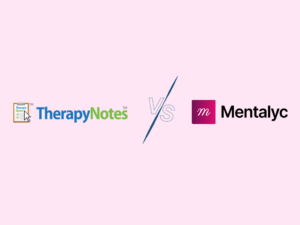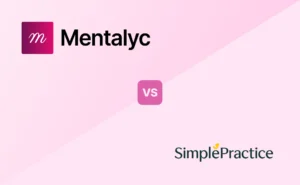The Essential Guide to ICD-10 Codes for Schizophrenia: What Every Therapist Must Know
As a therapist, staying up-to-date with the latest advancements in this field is crucial for providing the best care possible. By now, you may have heard some buzz about ICD-10 codes, but how confident are you in diagnosing, treating, and reporting on your clients with schizophrenia? Understanding the ICD-10 code for schizophrenia is more than just a professional obligation; it is a pathway to improved patient care. By mastering the intricacies of this code, you’ll be equipped to accurately document diagnoses, track treatment progress, and advocate for your clients.
Within the ICD-10 coding system used for diagnoses, the category for schizophrenia falls under F20. This specific category encompasses various subtypes of schizophrenia, requiring further clarification during diagnosis using additional codes within the F20 range.
This comprehensive guide will take you on an informative journey and equip you with the confidence to effectively communicate with colleagues, insurance providers, and regulatory bodies, ensuring a seamless experience for yourself and your clients. Throughout this guide, we’ll break down the essentials of the ICD-10 code for schizophrenia, offering valuable insights into its nuances and applications. From its diagnostic criteria to the various subtypes of the disorder, we’ll provide you with a comprehensive understanding of each component. You’ll also discover tips and tricks for efficient code selection, ensuring accurate reporting while minimizing administrative burdens.
Understanding Schizophrenia and it’s ICD-10 Code
Schizophrenia is a severe mental illness characterized by abnormalities in one or more of the five domains: delusions, hallucinations, disorganized thinking, disorganized or abnormal motor behavior (including catatonia), and negative symptoms. To receive a diagnosis of schizophrenia using ICD-10, an individual must be experiencing symptoms from at least two of these domains for a significant portion of time during a one-month period.

New! Transfer your notes to EHR with a single click. No more copy-pasting.
Key Diagnostic Criteria for Schizophrenia
- Delusions: False beliefs that are firmly held despite clear evidence to the contrary. For example, believing that people on TV are communicating directly with you.
- Hallucinations: Seeing, hearing, smelling, or feeling things that aren’t there. Auditory hallucinations, like hearing voices, are most common in schizophrenia.
- Disorganized speech: Speaking in a confused, illogical manner and rapidly switching between unrelated topics or using made-up words.
- Negative symptoms: Reduced emotional expression, social withdrawal, low motivation or energy, and impaired thinking. For a diagnosis of schizophrenia, at least two symptoms must be present for six months.
- Ruled out other possible disorders: Conditions like schizoaffective disorder, bipolar disorder, or depression with psychotic features must be ruled out before diagnosing schizophrenia.
The ICD-10 code for schizophrenia is F20. This section covers schizophrenic disorders characterized by impaired thinking, emotional expression, and social functioning. The release of the DSM-5 in 2013 introduced minor changes to the diagnostic criteria for schizophrenia. For example, the DSM-5 recognizes that psychotic symptoms can exist on a continuum and schizophrenia is not necessarily a lifelong disorder. The latest DSM-5-TR additionally provides updated diagnostic criteria for F20 that incorporate changes from DSM-5.
Schizophrenia’s ICD-10 code has several qualifiers to specify the type, including:
- F20.0 Paranoid schizophrenia: Delusions or hallucinations prominent, less thought disorder / disorganized behavior
- F20.1 Hebephrenic schizophrenia: Disorganized behavior, flat or inappropriate affect, speech impairment
- F20.2 Catatonic schizophrenia: Psychomotor disturbance like stupor, excitement, posturing, negativism
- F20.3 Undifferentiated schizophrenia: Meets general diagnostic criteria but without enough symptoms to meet other subtypes
- F20.5 Residual schizophrenia: Past episode of schizophrenia, current attenuated or residual symptoms
- F20.8 Other schizophrenia: Schizophrenia with features that don’t fit the other subtypes
- F20.9 Schizophrenia, unspecified: Meets general criteria without enough info to specify the subtype
Using ICD-10 Codes to Inform Treatment Goals and Plans
Using ICD-10 codes to inform treatment plans is crucial for mental health professionals. Once determined that a patient qualifies for an F20 diagnosis, this code serves as a valuable tool to guide treatment in several ways. The specific ICD-10 code for schizophrenia helps develop tailored treatment plans by understanding the subtype a patient presents with, such as paranoid schizophrenia (F20.0), disorganized schizophrenia (F20.1), or catatonic schizophrenia (F20.2).
Therapists can then design interventions targeting unique symptoms and challenges of each subtype, ensuring patients receive the most effective treatment for their needs. For example, therapies for paranoid schizophrenia may address delusions and paranoia, while treatment for disorganized schizophrenia could emphasize improving disorganized thinking and speech. This personalized approach maximizes outcomes. Other examples of treatment goals include;
- Focus on managing positive symptoms like delusions or hallucinations with antipsychotic medications and psychotherapy. Cognitive behavioral therapy, in particular, can help address thought distortions and cope with symptoms.
- Address negative symptoms such as lack of motivation or flat affect with social skills training, occupational therapy, and medications to improve functioning and quality of life.
- Provide psychoeducation about schizophrenia, its symptoms, and ways patients can recognize warning signs of relapse. Educate family members as well so they can offer support.
- Recommend case management services to help with daily tasks like medication compliance, transportation, and finances. A case manager can also connect patients to community resources.
- Discuss ways to reduce stress, limit alcohol/drug use, and improve sleep hygiene and social connections. All of these lifestyle factors can influence the severity and frequency of symptoms.
- Monitor patients regularly for signs of relapse or worsening symptoms. Make medication adjustments as needed and schedule more frequent therapy sessions during periods of instability.
- Connect patients with local support groups to help reduce isolation and build a robust support system. Support from others with schizophrenia can be beneficial.
FAQ on ICD-10 Codes Related to Schizophrenia
What is the ICD-10 code for schizophrenia?
The ICD-10 code for schizophrenia is F20. This code covers schizophrenia, schizotypal, delusional, and other non-organic psychotic disorders. There are additional qualifiers you can use to specify the schizophrenia subtype, like:
- 0 – Paranoid schizophrenia
- 1 – Disorganized schizophrenia
- 2 – Catatonic schizophrenia
- 3 – Undifferentiated schizophrenia
- 5 Residual schizophrenia
- 8 Other schizophrenia
- 9 Schizophrenia, unspecified
Why are ICD-10 codes important?
ICD-10 codes are used for clinical documentation, billing, and statistical purposes. They provide a common language for reporting diseases and conditions. These codes help determine the medical necessity for treatment and what services insurance will cover.
What are the diagnostic criteria?
To diagnose a patient with schizophrenia and use the F20 code, they must meet the DSM-5 criteria. This includes symptoms like delusions, hallucinations, disorganized thinking, and negative symptoms. The symptoms must have been present for at least six months.
How can I use these codes?
As a therapist, you should use ICD-10 codes on insurance claims, patient records, and treatment plans. Codes like F20 help justify the medical necessity of psychotherapy and other services. They also make record-keeping and billing more efficient.
Maintaining knowledge about diagnostic codes and their appropriate usage is crucial for mental health professionals to provide consistent, high-quality care. Understanding the diagnostic criteria for schizophrenia and how corresponding ICD-10 codes are structured gives clinicians a powerful tool for serving clients.
Comprehensively learning one code at a time, such as thoroughly grasping the criteria of schizophrenia, allows for an accurate representation of client conditions. Familiarity with shifting definitions is increasingly essential as diagnostic frameworks evolve through DSM revisions. While the constant updates to ICD codes may initially feel daunting, accessible explanations empower professionals. Simplified coding navigation resources free up time for improving the quality of care, ensuring clients benefit from clinicians’ expertise.
Cutting-edge resources like Mentalyc can significantly assist in navigating coding intricacies, changes, and best practices, freeing up time to focus on clients. Overall, prioritizing coding knowledge equips professionals to enhance lives through informed diagnosis and treatment, and the more they know, the better equipped they’ll be to improve lives.
Disclaimer
All examples of mental health documentation are fictional and for informational purposes only.
Why other mental health professionals love Mentalyc

“Having Mentalyc take away some of the work from me has allowed me to be more present when I’m in session with clients … it took a lot of pressure off.”
LPC

“It takes me less than 5 minutes to complete notes … it’s a huge time saver, a huge stress reliever.”
Licensed Marriage and Family Therapist

“It’s so quick and easy to do notes now … I used to stay late two hours to finish my notes. Now it’s a breeze.”
Licensed Professional Counselor

“By the end of the day, usually by the end of the session, I have my documentation done. I have a thorough, comprehensive note … It’s just saving me hours every week.”
CDCII






